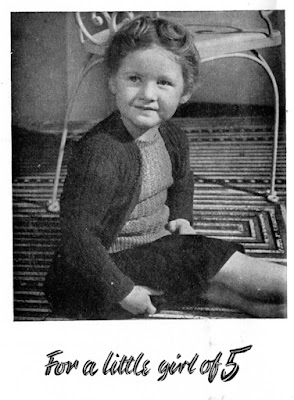In April, I wrote about
a secret project that I was knitting in three colours of Rowan Felted Tweed. The pattern has now been published, in the November/December issue of
Piecework magazine. It's a special issue on collections, and Angharad and I wrote an article about the Knitting & Crochet Guild's collection for it. The project was to accompany the article, and now that the magazine has appeared, I can show it to you.
 |
| Tam for Piecework November/December 2017 |
It is a tam, with two bands of stranded knitting, and a tassel. (The magazine has a nicer photo of it - it was photographed on a model, who is much more attractive than my polystyrene head.)
Choosing a project to represent all the publications in the Guild's collection was quite tricky - I wanted something unusual, not too big or difficult to knit, and something that would look good now. Just as I was wondering what to choose, a
donation arrived for the collection, of booklets and patterns from the early 1920s, including a booklet of
Hats, Caps & Tams, which was just what I was looking for.
 |
| Beehive Booklet 23: Hats, Caps & Tams |
I had never seen a copy of the booklet before, and I think that not many have survived. It was published in the early 1920s - after J. & J. Baldwin of Halifax had merged with Paton's of Alloa in 1920, but while they were still acting as separate companies.
The booklet has an introduction which describes the teazle wool specified for the patterns in the booklet:
TEAZLE WOOL HATS, CAPS and TAMS, in Knitting and Crochet, are a need of the times for wear with the woollen Jumper, Scarf, or Sports Coat which form part of practically every Woman's wardrobe. They can be made at home to match the other garments and at but a quarter of the cost, or less, of the ready-made article.
Moreover, at the taste of the individual, a Colour Scheme may be deliberately put together and an air of distinction given to the finished article, such as would be very difficult to obtain through Millinery channels. TEAZLE WOOL, from which the whole of the articles illustrated in this book were made, is supplied in a lovely range of shades from which to choose such a Colour Scheme.....
The facility with which the surface of fabric made from TEAZLE WOOL can be "raised," by means of the special "TEAZLE" Brush, makes it peculiarly suitable for Hats, Caps, and Tams. The process softens the colours and gives a very pleasant touch to the fabric, the freshness of which can be restored at any time, and even after washing, by a gentle application of the "Brush."
(Teazle wool was named for the heads of the teasel plant, shown in the trademark, that were used in the woollen industry to raise the nap on woven cloth.)
I didn't want to choose a pattern that was designed to be brushed, but fortunately many of the patterns in the booklet were not, and I chose this design from the front cover, which isn't brushed:
Even though I didn't intend the finished tam to be brushed, in order to imitate Teazle wool I couldn't choose a smooth yarn - it would have to be a wool that could conceivably be brushed. The pattern specified the colours, too, so I wanted to be able to match them if possible. And of course I needed to be able to match the stated gauge.
My friend
Ann Kingstone suggested using Rowan Felted Tweed, which she used for her
Stranded Knits book, and assured me that it would knit to the right gauge. And Rowan very kindly supplied me with Felted Tweed in Bilberry, Watery and Ginger, to stand in for Violet Blue, Jade Green and Orange Teazle Wool. The result looks very close to the illustration in the booklet, and has the 'jewelled effect' described in the pattern - I am very pleased with how it turned out.
Having chosen the pattern and the yarn, I still had to modify the pattern quite a lot. The knitted tams in the booklet were intended to be made in four or five separate sections and then sewn together. Here's a chart for one of the sections in a similar tam from the booklet - each section in the tam pattern I chose is the same shape, apart from the final decreases.
 |
| Chart for a 4-section tam |
The booklet has a preamble that suggests knitting in the round as an alternative - I thought that most knitters now would prefer that.
The tam I chose was intended to be knitted in 4 sections, and I knit a trial tam (in other colours of Felted Tweed) following the pattern closely, apart from knitting it in the round.
I didn't like it - it was too square. And the decreasing in the centre of the crown didn't work well (for me anyway) - it didn't lie flat. So I changed to five sections and changed the decreasing in the middle. I also had to re-jig the bands of stranded knitting, so that they sat symmetrically within each section, and carried on smoothly from one section to the next - not a consideration in the 1920s, it seems.
The final hurdle was the tassel. All the pattern says about that is "sew together neatly,
finishing with a length of chain and tassel from the centre of the crown." Some instructions would have been nice, but in the absence of any help, I had to make it up, and fortunately, I could see roughly how long the chain and tassel should be from the illustrations in the booklet. Here's the finished tam, showing the crown with the five converging sets of decreases, and the chain and tassel. I am very proud of it - my first published pattern.





















